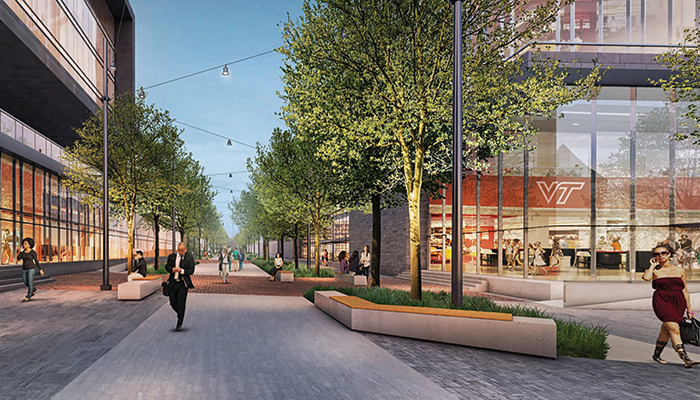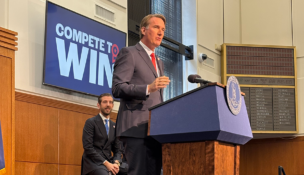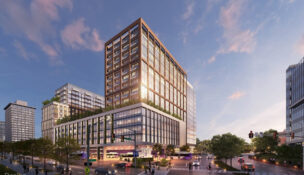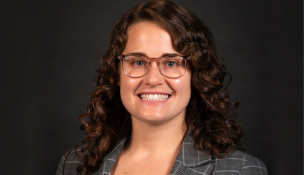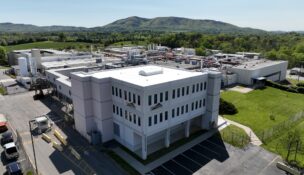A winner in a split decision
The ‘real work is about to start’ on transformative Amazon project
A winner in a split decision
The ‘real work is about to start’ on transformative Amazon project
Now that NoVa is getting half of Amazon Inc.’s second corporate headquarters, state and local economic development officials and commercial real estate leaders are turning their efforts to implementation. Most people still haven’t come down, though, from the emotional high of winning one of the most sought-after corporate projects of the 21st century.
Victor Hoskins, director of economic development in Arlington, was on the call Nov. 12 with state economic development officials when Amazon informed the group that half of its $5 billion project was coming to Northern Virginia. “It was a huge feeling of exhilaration,” he recalls. “It was like an emotional outburst of ‘yahoo.’ It was amazing.”
The deal, which wasn’t finalized until less than 24 hours before it was announced on Nov. 13, has Amazon investing $2.5 billion in a 4 million-square-foot campus in Arlington County and Alexandria that’s expected to create 25,000 high-paying jobs over 12 years.
The Long Island City area of Queens in New York landed the other half of the much-coveted project that came to be known as Amazon HQ2. The split decision for the project, which promised 50,000 jobs, came to light late in a site-search saga that lasted for more than a year.
The search prompted frenzied speculation and a bidding war among 238 cities across North America. Northern Virginia’s proposal had included four sites.
When the fateful call came, Hoskins says he was anxious. “This is the largest, single transaction that I have been involved with in my life,” notes the 25-year industry veteran. “I was thinking to myself, ‘I hope this is the good call. Maybe they just want more information. They had asked for clarifications before. ‘”
Not this time. “Much of the conversation is a blur, but what I remember is that they said, ‘You guys are one of the selected sites, and there’s one other.’ They didn’t tell us who the other site was, and I was fine with that. I was just delighted that they said yes to us.”
Hoskins says Amazon’s massive new headquarters will be a transformative project for Arlington. “It moves us into the position that we were trying to reach — jobs of the future. Amazon is known for its innovation. It’s taking up a spot in a big place with a high vacancy rate, bringing new energy to that area, bringing in new development. This is the boost that we needed for the region.”
Now that the location has been picked, officials are focusing on making the deal happen. “The real work is about to start. The real estate, the move in. There’s a lot of work ahead of us,” says Stephanie Landrum, president and CEO of the Alexandria Economic Development Partnership.
Amazon’s headquarters will be housed at National Landing, a newly branded site that includes Crystal City and the eastern portion of Pentagon City in Arlington and the northern piece of Potomac Yard in Alexandria.
In the first phase of what’s expected to be a 20-year project that could morph into 8 million square feet, the Seattle based e-commerce and cloud-computing giant will lease 500,000 square feet of existing space in Crystal City and Pentagon City from JBG Smith, a Chevy Chase, Md-based commercial real estate firm. According to JBG Smith, Amazon also plans to buy two sites, Pen Place and Met 6, 7, 8 land, for the construction of new buildings.
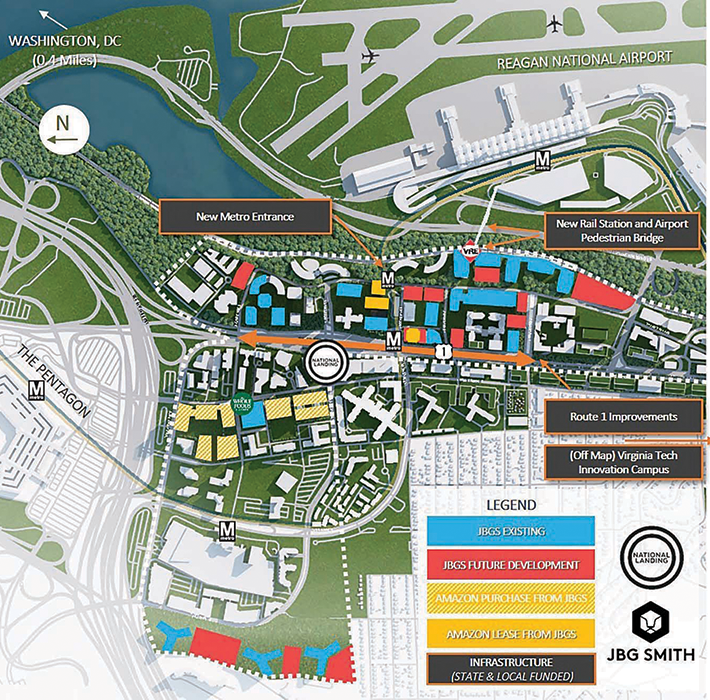
In a statement, company CEO Matt Kelly called Amazon’s selection a “game changer” for the region that will “breathe new life into a market that’s still recovering from the headwinds of BRAC, the global financial crisis and sequestration.”
Business and state leaders say the win boosts NoVa’s national profile as an East Coast hub for technology. The project also is prompting strategic public-education investments to turn out more computer-savvy graduates who will benefit not only Amazon but other companies in the years ahead.
In fact, expanding Virginia’s tech talent pipeline in computer science was one of the hallmarks of Virginia’s Amazon proposal. While the company’s headquarters will anchor the north end of National Landing, a $1 billion Virginia Tech Innovation Campus will anchor the south end in Potomac Yard.
Virginia Tech and the state have agreed to pay $250 million each to help fund what would function as a new graduate campus to develop high-tech talent in the region. Much of the rest of the money is expected to come from private philanthropy and industry partnerships.
That project is part of a long-term investment of more than $1 billion in public education by Virginia. That includes up to $710 million to double the annual number of graduates with bachelor’s and master’s degrees in computer science and related fields, ultimately yielding 25,000 to 35,000 additional graduates above current levels during the next two decades. As part of this effort, George Mason University would get $125 million for an expansion of its campus in Arlington.
The package also includes $25 million for technical education in K-12 schools and $25 million for a higher education internship program.
“Virginia put together a proposal for Amazon that we believe represents a new model of economic development for the 21st century,” Gov. Ralph Northam said in announcing the selection of the Arlington site. “The majority of Virginia’s partnership proposal consists of investments in our education and transportation infrastructure that will bolster the features that make Virginia so attractive: a strong and talented workforce, a stable and competitive business climate, and a world-class higher education system.”
Incentives
Amazon has said that its investment and job creation should produce more than $3.2 billion in new state general-fund revenues during the next 20 years.
In return, Amazon will receive performance-based direct incentives of $573 million based on the company creating 25,000 jobs with an average pay of more than $150,000 over the next two decades. This includes a workforce cash grant from the commonwealth of up to $550 million based on $22,000 for each job created. Amazon would receive the incentive only if it meets the projected employment goals. This must be approved by the General Assembly.
The company also is slated to receive a cash grant from Arlington of $23 million over 15 years based on the incremental growth of the existing local transient occupancy tax, a tax on hotel rooms.
To woo Amazon, Virginia also offered $195 million in transportation projects to improve mobility in Northern Virginia. In addition, Arlington and Alexandria plan to fund more than $570 million in transportation projects, including rail connections and transit facilities serving the site.
The quest to land Amazon involved hundreds of people working collaboratively across the state. Stephen Moret, president and CEO of the Virginia Economic Development Partnership, lauded the cooperative efforts, saying it laid the groundwork for Virginia’s successful bid.
State Sen. Frank Ruff, R-Mecklenburg County, said winning Amazon’s headquarters is “a significant accomplishment for Virginia and its technology sector. The jobs might be in Northern Virginia, but the revenues that will come are going to help us finance education, public safety, mental health, all the important issues.” Ruff is chairman of the General Assembly’s Major Employment and Investment Project Approval Commission, which reviews and approves major state incentive packages.
From the start, Northern Virginia was considered a top contender for HQ2 because of its deep pool of tech talent. According to Cushman & Wakefield’s 2018 Tech Cities report, the metro D.C. region has 327,273 tech workers, second only to New York with 491,419. With an office market of more than 300 million square feet that in recent years has seen higher-than-normal vacancies as a result of the federal budget cuts, it also has enough space to absorb a large headquarters.
Amazon already employs more than 2,000 people in Northern Virginia in technical and corporate jobs, and it has nearly 100 data centers in Loudoun County that are either on the ground, being constructed or in the planning stages.
Plus, Amazon’s founder and CEO Jeff Bezos has ties to the region. He owns The Washington Post and a $23 million property in D.C.’s Kalorama neighborhood that he’s renovating into a home.
In addition, Amazon is locating the East Coast campus for its cloud-computing service, Amazon Web Services, in Fairfax County. While the company is best known as the world’s largest online retailer, the fast-growing cloud-computing division generated $1.6 billion, or 55 percent, of the company’s third-quarter operating income of $3.7 billion.
When Amazon announced its short list of 20 cities in January, Northern Virginia, Washington, D.C., and Montgomery County, Md., all made the list. Jason Miller, CEO of the Greater Washington Partnership, characterized Amazon’s decision as “an incredible win” for the entire region. “It is an important affirmation of our talent, our diversity, and our incredible potential … When one wins, we all win.”
Besides transportation improvements, Arlington and Alexandria also have committed to fund affordable housing, workforce housing and public infrastructure, relying on revenues generated from Amazon’s presence in their communities. Combined, the localities project annual investments of more than $15 million during the next decade, resulting in the creation and preservation of 2,500 to 3,000 units in and around the Crystal City, Pentagon City and Columbia Pike areas and throughout Alexandria.
National Landing
National Landing checks off many requirements Amazon had in a second headquarters, namely an urban site with access to public transit that’s close to an airport. The area is within walking distance of Ronald Reagan Washington National Airport. It has three Metro stations and a commuter rail station. Plus, Crystal City’s proximity to the Pentagon is seen as a plus at a time when Amazon’s cloud computing unit is vying for billion-dollar federal defense and intelligence contracts.
Recently, Arlington approved major upgrades to Crystal City’s commercial center, Crystal Square. JBG Smith plans a new four-story retail building anchored by an Alamo Drafthouse Cinema and a specialty grocery store. The company already has tried to punch up the area’s drab public exteriors by covering some office high-rises with colorful building wraps. Crystal City offers 8.6 million square feet of rentable space and has a vacancy rate of 20 percent.
“The bones are there; it just needs to be built out,” says Sarah Dreyer, regional director of research for Savills Studley’s D.C. office. “There’s an opportunity for whoever comes to craft it on their own.”
Background
Amazon’s site selection sweepstakes began on Sept. 7, 2017. That’s when the company issued a request for proposals (RFP) inviting cities in North America to respond with bids. The deadline for submitting proposals for what came to be called HQ2 was Oct. 19. The process drew proposals from 238 localities across the U.S., Mexico and Canada.
Bezos said at the time that its second headquarters campus would be “a full equal” to the company’s global headquarters campus in Seattle. That campus employs about 45,000 people in 33 buildings and is still growing. According to Amazon, the company has had an indirect impact of $38 billion in additional investment on Seattle’s economy. Yet, some residents there have been critical of the company, saying its presence has driven up housing prices and swamped the city’s infrastructure.
Perhaps because of those sentiments, Amazon may have wanted to reduce its impact with two new headquarters instead of one. In a statement about the two locations, Bezos said, “These two locations will allow us to attract world-class talent that will help us to continue inventing for customers for years to come.”
To win the headquarters, some states such as Maryland and New Jersey reportedly each offered economic incentive packages of more than $5 billion. Following the open call, though, the quest to win HQ2 was shrouded in secrecy. Until November’s announcement, most states, including Virginia, refused to disclose what incentive offers had been made for fear of tipping their hand to the competition. Nor would they make public what sites were being offered, in part because state officials and developers had signed nondisclosure agreements with Amazon.
Groups opposed to having Amazon’s second headquarters in the D.C. area didn’t take kindly to being kept in the dark about what was being offered to a company headed by the world’s richest man. Bezos took the top spot this year on Forbes magazine’s annual list of America’s wealthiest people with an estimated net worth of $160 billion.
Two local community groups, Our Revolution Arlington and the Northern Virginia branch of Metro DC Democratic Socialists of America, have been vocal about their opposition to Amazon. DSA NOVA’s Alex Howe says his group opposes providing incentives to Amazon. “Virginia, Arlington and Alexandria shouldn’t be subsidizing or giving money to the largest corporation in the world.”
Our Revolution Arlington and DSA NOVA are working to make sure Amazon pays its fair share of the deal. That includes providing enough money for infrastructure improvements across the entire region and ensuring enough money for affordable housing.
Some residents also are worried that housing prices will spike, much like what happened in Seattle. While the Northern Virginia suburbs have some of the highest median household incomes in the country, they also boast some of the most expensive home prices. During the third quarter, the median price for a single-family home in Arlington was $855,000, according to a market report from the Long & Foster Cos. The median price for a townhome came in at $565,950, and buyers could expect to pay $360,000 for a condo or co-op.
The Metropolitan Washington Council of Governments says the region needs to add 235,000 housing units by 2025 to respond to expected job growth, even without Amazon.
Hoskins has a rebuttal for the naysayers. “This is an opportunity to transform our region, to diversify our economy and move away from the government concentration. This is what our region needs, and we should embrace it.”
He notes that that Maryland, Virginia and the District of Columbia came up with a package of historic funding earlier this year to shore up the aging Metro system. “Our region came together to deal with the transportation problem on a scale that they had never done before, and they did that because they saw a company like Amazon interested in our region. We could do the same thing for affordable housing. When you are challenged, you change. That’s when you do your greatest work.”
t

